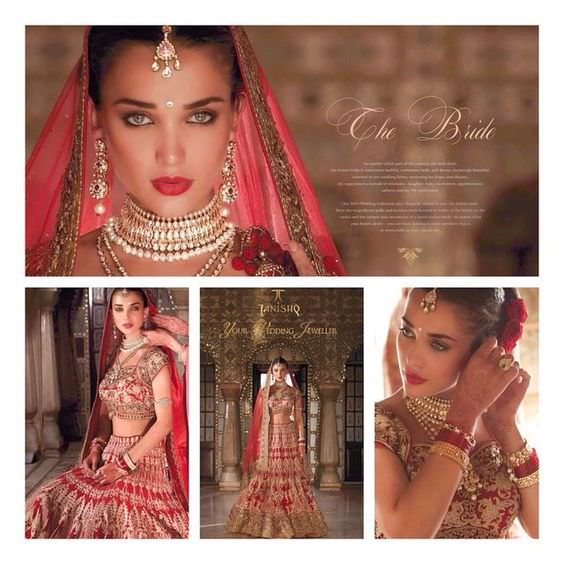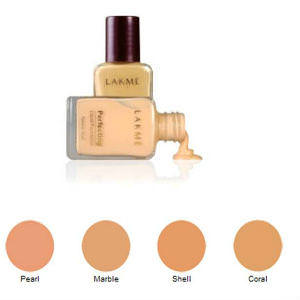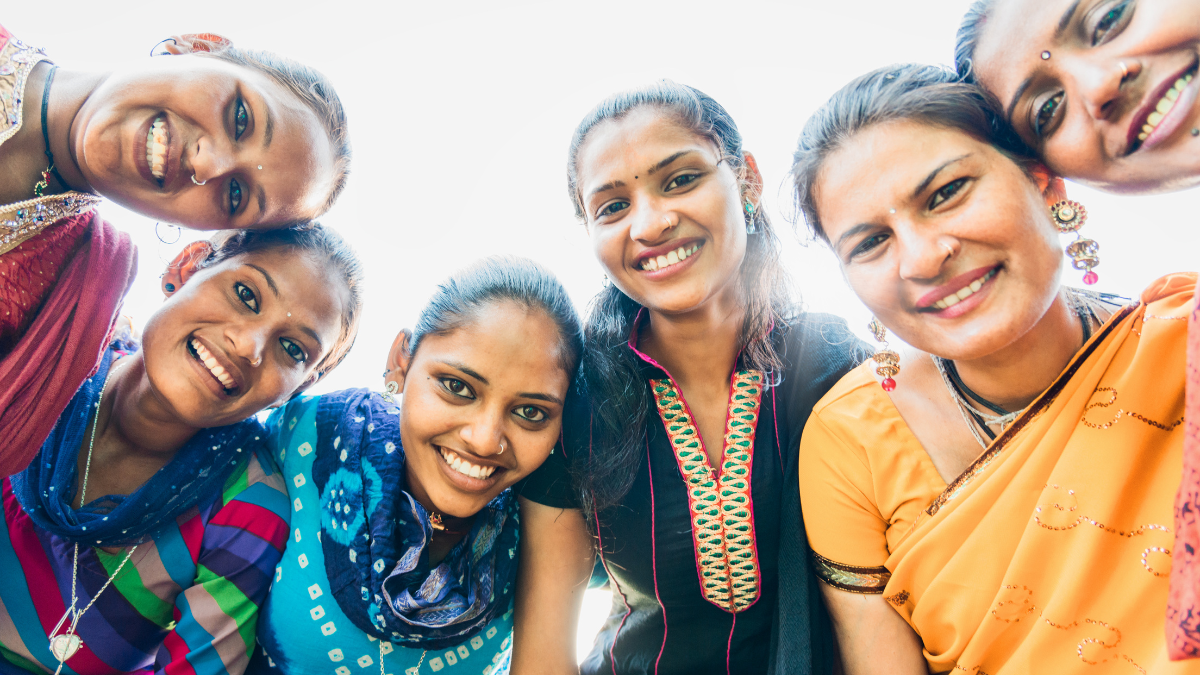Recently, I made a huge mistake. When I went to get my photo clicked at a studio for a visa application to the UK, I accidentally told the photographer the purpose of the photos. Now, I am a woman with a dusky complexion, and owing to my Tamil heritage, frizzy, flyaway hair that I have often tried, and failed, to straighten into submission. After my brief celebrity moment at the photo studio was over, I noticed that the photographer was doing his best to keep me away from his computer. “Thoda touch ups kar rahe hain, madam jee. Time lagega,” (I’m touching up your pictures, it’ll take some time), he told me, before shooing me off.
You can probably see where this is going, but I certainly couldn’t. Fifteen minutes later, I was shocked into silence when the photographer brandished the photos of me – me??? That couldn’t be me, could it? I was numb as I perused the photo of a barely recognizable me – for one, I looked like I had just run face-first into a pile of flour. I wouldn’t be out of place in a Trump rally with that complexion. It was bad, but more than that, it hurt. It hurt that this man thought that for me to be granted a visa, I would have to have my face whitewashed into oblivion.
This incident got me thinking about a different, but a related, phenomenon- that of the white mediocrity v/s PoC excellence paradigm. In a nutshell, it is the phenomenon where People of Colour (or PoC), despite being talented or intelligent or good-looking, are shunted to the back-burner in favour of white mediocrity – people whose glaring lack of substance is excused purely because of their skin tone.
Think, for instance, of Bollywood, where white skin rules the roost- with people like Katrina Kaif and Amy Jackson, whose pitiful acting skills are rivaled by that of a sixth grade annual play production, probably. I watched Fitoor recently, despite the fact that it tanked at the box office, mainly for two reasons – it was an adaptation of one of my all-time favourite books, Great Expectations and second, it had the inimitable Tabu as Miss Havisham.
I won’t mince my words – the film sucked royally. No, the music was great (thank you, Amit Trivedi), the cinematography stunning (it is shot entirely in Kashmir, what do you expect), Aditya Roy Kapur’s acting as the shy, yet passionate Noor was enchanting. What made me fidget in my seat, however, was the secondhand embarrassment caused by Katrina Kaif’s truly awful Hindi diction and a complete lack of any emotions whatsoever.
And that, got me thinking. See, we live in a country with one billion people. Like, one out every seven homo sapiens is an Indian. More than that, Bollywood is full of young, aspiring actors looking for their big break. People who can speak Hindi, people who are actually Kashmiris.
But, I digress. This is not an attack on Katrina Kaif, who, despite her cringe-inducing Hindi, is, I am sure, a lovely woman. I am merely trying to highlight the mentality of one of the biggest film industries in the world, which would rather cast a pale, white-passing person with zero talent than a dark-skinned one with an iota of skills.
Let’s also not forget the slew of accusations that were made last year that several Bollywood veterans, including Kajol, Rekha and Sridevi, had undergone skin-lightening treatments because they felt pressured by their peers.
Last year, while on a visit to my extended family in Chennai, I got into a huge argument with a cousin about a seemingly innocuous thing, which then caused her to label me as a ‘perpetually angry feminazi bitch’ (a title I wear with pride now). The thing in question was an ad by a leading Indian jewellery company for their latest wedding collection. Let me emphasize on the word ‘Indian’ here, nice and clear. The campaign starred none other than Amy Jackson. Yes, the lady who acted in cinematic masterpieces like ‘Ekk Deewana Tha’ and ‘Singh is Bling’. The wedding collection was done thematically, and Amy donned the traditional attires of several different brides- the Tamil bride, the Bengali bride, the Malayali bride, and so on and so forth. Here, take a look for yourself.

Let’s put aside the glaring cultural appropriation here for a minute and focus on what is really the most disturbing feature of these photos. See, like I said before, I am a brown-skinned, flyaway-haired Tamil woman, and that is not what an average Tamil bride looks like. I have grown up watching my mother and aunts and grandmothers and cousins dress up in our traditional 9 yard sarees and look absolutely ethereal. I have attended many, many weddings and engagement ceremonies where the bride is bedecked in gorgeous Kanjeevaram sarees, as is the norm, and many different layers of gold jewelry, just like Amy here, except, not really. An average Indian bride is not light skinned with fine hair and hazel eyes. Nor is there such a lack of dark-skinned women in this country that we have resorted to casting Caucasian women for an Indian bridal jewellery advert. And you know how I, a dark Indian woman, feels after looking at such an ad? I feel invisible, I feel like the media doesn’t want to talk about people like me, despite people like me forming the majority in this country. I feel like perhaps this jewellery brand isn’t for me and probably never will be. This subtle, internalized aversion of brown skin manifests in ways that are toxic, for it not only pushes the notion that white skin=superior, but also that brown skin=ugly, undesirable, unattractive. Thanks a lot, Tanishq, I appreciate it.
Then there is India’s cosmetic and makeup industry itself. Take Lakme, for instance, a brand that made its entry in the 90s and prides itself on being one of India’s first own makeup brands. Lakme’s claim to fame was its affordable range of creams, powders, kajal and the works. This, however, is their shade card for one of their foundations. It comprises of four shades, and conveniently excludes darker skin tones. Look at the nomenclature of the shades, too – pearl, marble,shell, coral.

Lakme also makes it a business to tout its foundations and concealers as ‘white perfect’ or ‘fairness foundation’. I mean, WTF? My foundation is supposed to blend into my skin tone, not make it fucking white.
It’s not just a problem limited to the Indian makeup scene, however. Recently, makeup giant Maybelline was in the news for all the wrong reasons, when it launched just 6 of the lighter shades of its 12-shades foundations in the UK. Called ‘Dream Velvet’, the foundation is available in 12 shades- from pale to dark in the US. When it hit the British shores, though, the range was halved and only six of the lightest shades are up for sale.
From makeup to movies to even lingerie brands with their skewered understanding of the word ‘nude’, the message is loud and clear. If you, God forbid, possess more melanin than some, then you’re going to have a tough time, and there is nothing you can do about it at all.
All I can say is, I was never more relieved than when I got to the visa office and was told that I wouldn’t need a photograph, after all.
Further Reading
2. Sports and White Mediocrity
About the author(s)
Senior student of English at the University of Delhi. I hope you like feminist rants because that's kind of my thing.





Great article.
Loved it.
However this doesn’t seem right to me.
“I am merely trying to highlight the mentality of one of the biggest film industries in the world, which would rather cast a pale, white-passing person with zero talent than a dark-skinned one with an iota of skills.”
Zero talent and iota of skills essentially mean the same thing and as I can feel by the tone I think you meant to emphasize that bollywood prefers a light-skinned person with zero talent to a dark skinned person who is very talented.
Thanks.
Love this! Yes, people like Amy Jackson aren’t fooling anyone when they dress up and act like Indians. I wrote a similar piece here: http://www.womensweb.in/2015/05/white-heroines-in-bollywood/
I can absolutely relate to this article on a personal level, being a dark skinned girl myself. Especially the part where you got into an argument with your cousin regarding the ad.
Whenever I point anything problematic (be it racism, sexism, homophobia) my family/friends ask me to take a ‘chill pill’ by saying it’s just an ad/joke etc. They call me the over-hyperactive, self righteous buzzkill who can’t take a joke.